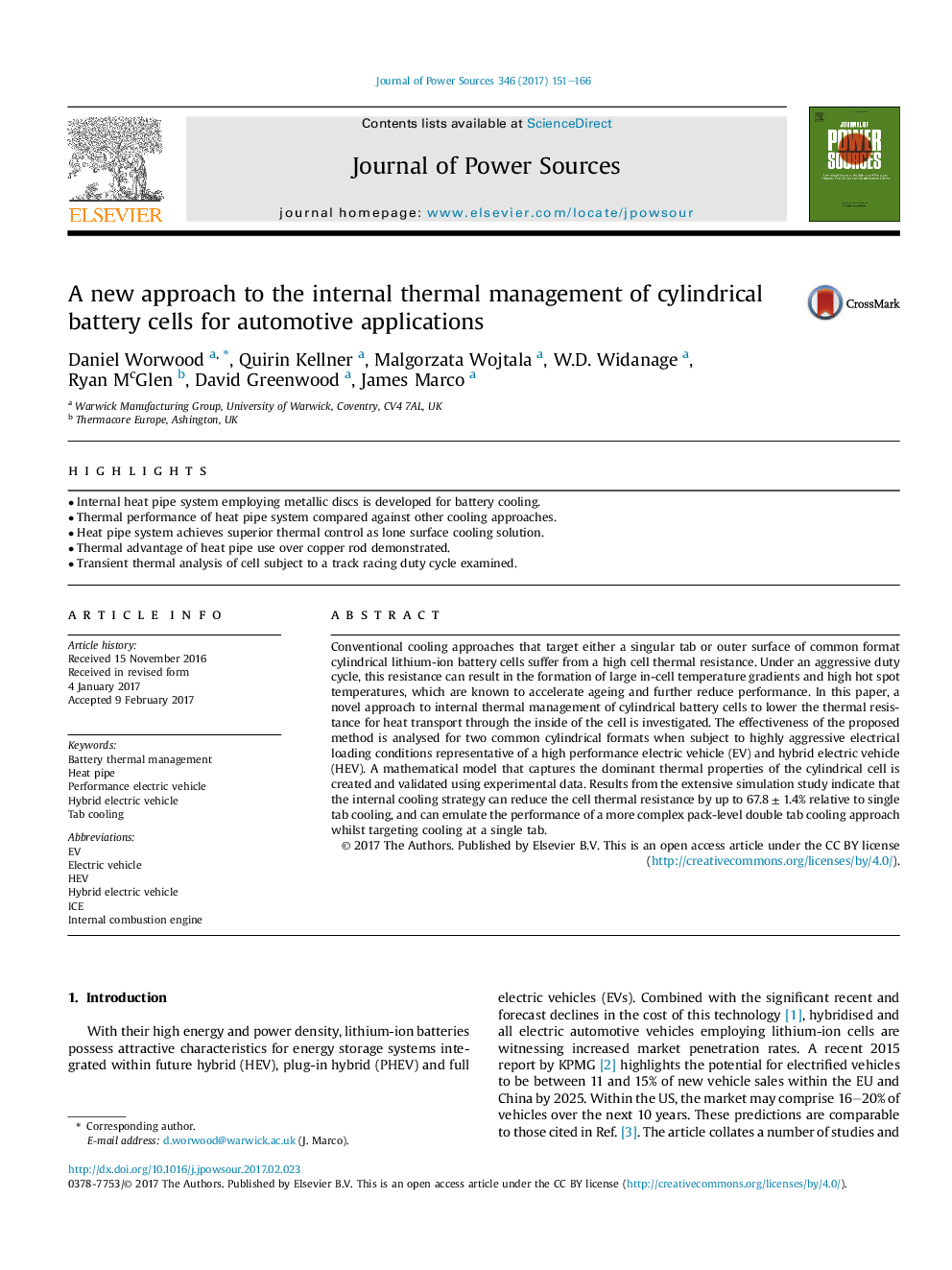| Article ID | Journal | Published Year | Pages | File Type |
|---|---|---|---|---|
| 5149732 | Journal of Power Sources | 2017 | 16 Pages |
Abstract
Conventional cooling approaches that target either a singular tab or outer surface of common format cylindrical lithium-ion battery cells suffer from a high cell thermal resistance. Under an aggressive duty cycle, this resistance can result in the formation of large in-cell temperature gradients and high hot spot temperatures, which are known to accelerate ageing and further reduce performance. In this paper, a novel approach to internal thermal management of cylindrical battery cells to lower the thermal resistance for heat transport through the inside of the cell is investigated. The effectiveness of the proposed method is analysed for two common cylindrical formats when subject to highly aggressive electrical loading conditions representative of a high performance electric vehicle (EV) and hybrid electric vehicle (HEV). A mathematical model that captures the dominant thermal properties of the cylindrical cell is created and validated using experimental data. Results from the extensive simulation study indicate that the internal cooling strategy can reduce the cell thermal resistance by up to 67.8 ± 1.4% relative to single tab cooling, and can emulate the performance of a more complex pack-level double tab cooling approach whilst targeting cooling at a single tab.
Keywords
Related Topics
Physical Sciences and Engineering
Chemistry
Electrochemistry
Authors
Daniel Worwood, Quirin Kellner, Malgorzata Wojtala, W.D. Widanage, Ryan McGlen, David Greenwood, James Marco,
